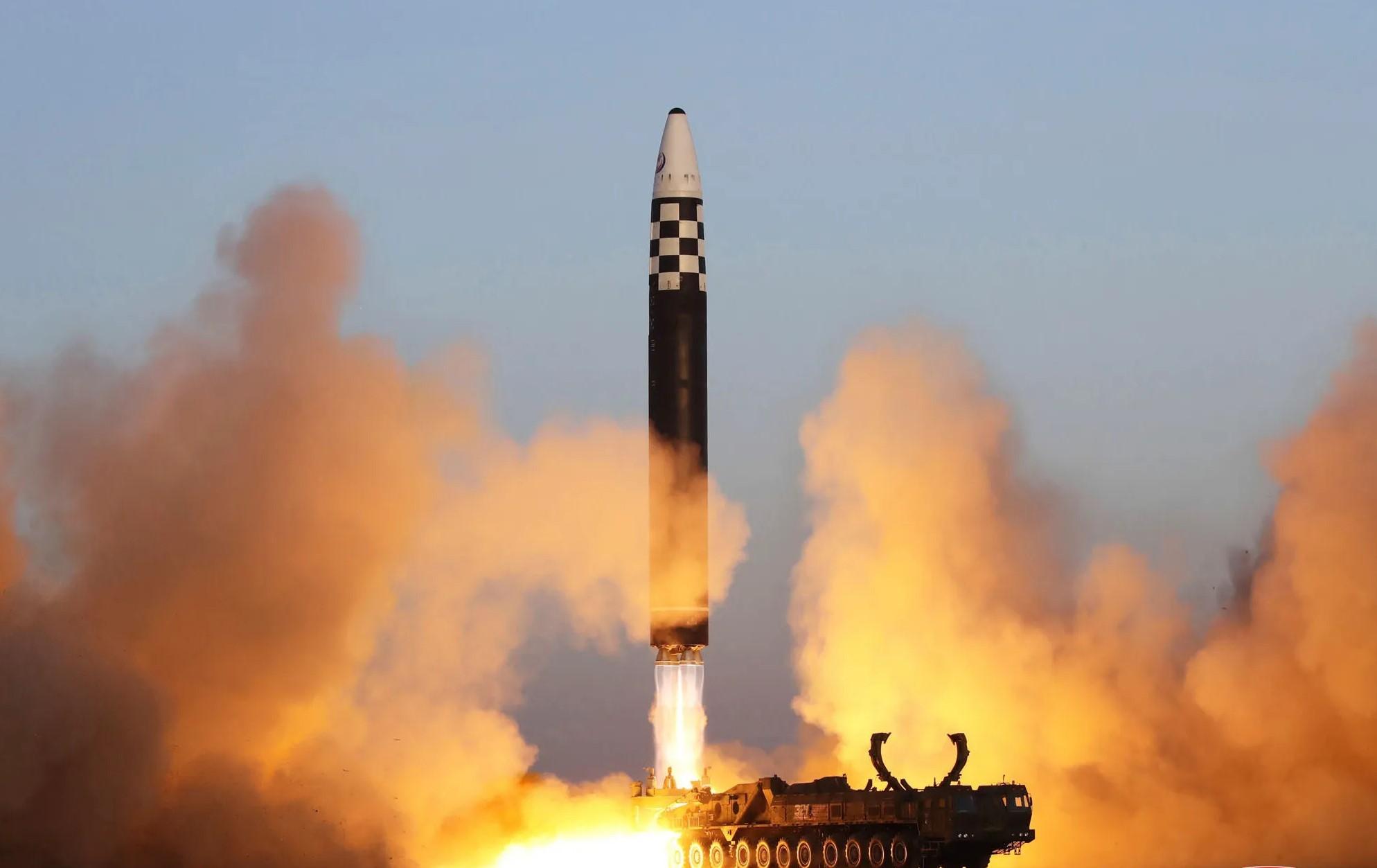What does North Korea's ballistic missile fire mean for US? Ensuring peace through nuclear warhead
On December 18, North Korea fired a short-range ballistic missile into the sea in a possible display of defiance against the latest steps by Washington and Seoul to tighten their nuclear deterrence plans against North Korean threats. South Korea's Joint Chiefs of Staff said the missile was fired from an area near the North Korean capital of Pyongyang and flew 570 kilometres before landing in the sea.
North Korea has tested similar missiles in the past, but the latest one came just hours after the U.S. warned Pyongyang against launching a nuclear attack against the U.S. North Korea didn't immediately confirm any details of its latest launches, but defence officials in South Korea and Japan — both close U.S. allies — said the long-range rocket travelled in the sea northwest of Tokyo and west of Japan's northern island of Hokkaido.
The short-range missile was also launched from the Pyongyang area towards the waters between the Korean Peninsula and Japan. Tensions on the Korean Peninsula are at their highest in years, with North Korean leader Kim Jong Un accelerating the expansion of his nuclear and missile program and flaunting an escalatory nuclear doctrine that authorizes the preemptive use of nuclear weapons.

In 2023, Pyongyang carried out a record number of weapons tests and launched a spy satellite as it moves ahead with leader Kim Jong Un's plans to modernize North Korea's military capabilities.
North Korea’s short and medium-range systems include a host of artillery and short-range rockets, including its legacy Scud-based and No-Dong missiles. In 2019, North Korea tested a range of new short-range, solid-fueled missiles, such as the KN-23 and KN-25.
Moreover, in the last ten years, North Korea has tested a variety of ballistic and cruise missiles. For example, recently, Pyongyang tested hypersonic missiles, which can fly at several times the speed of sound and at low altitudes to escape radar detection, as well as others launched from submarines. It reportedly flew about 1,000km on its maiden flight, but its true range is estimated to be over 15,000 km, according to the US-based CSIS Missile Defense Project.

Although the U.S. provides significant military aid to South Korea as a counterbalance to North Korea’s nuclear and ballistic missiles, it acknowledges the challenges presented by North Korea's modern weapons systems make it "incredibly hard" to locate a launcher and position forces to respond in advance of a launch.
Many defence analysts particularly mention the Hwasong-18 missile, capable of carrying a nuclear warhead, as the most powerful missile developed by North Korean engineers. In addition, the U.S., Japan and South Korea have been working to set up a real-time missile data-sharing system, but it is still "a few days" from going operational.
The official narrative of Pyongyang suggests that the country has a sovereign right to operate a ballistic missile program for self-defence and rejects a U.N. Security Council ban. As a result, several reports indicated that amid Pyongyang's missile testing, the U.S. nuclear-powered submarine Missouri in the South Korean port city of Busan in a solidarity move with Seoul.

Visits by U.S. nuclear submarines had previously been rare, but they have increased under agreements between Seoul and Washington that have boosted deployments of U.S. military assets. However, the continuous visits of U.S. submarines into the close vicinity of North Korea would provoke a reaction, though South Korea took a firm stance regarding deepening ties with the U.S.
In this vein, the number of joint military drills between the U.S. and South Korea dramatically increased in 2023. Consequently, South Korea has been seeking stronger reassurances from the United States that it would swiftly and decisively use its nuclear capabilities to defend its ally in the event of a North Korean nuclear fire.
Considering the Biden administration's ongoing standoff with China and Russia, it is unlikely that the White Houbolder steps to counter Pyongyang and directly support South Korea. As such, the U.S. will demonstrate sufficient power and commitment to defuse the North Korean threat while avoiding confrontation.








